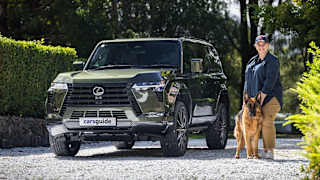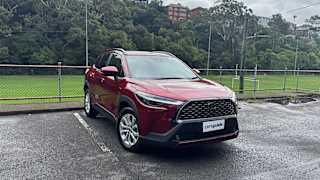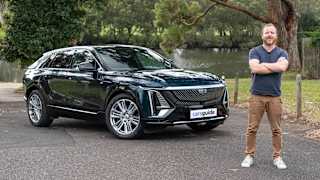The CX-9 has become more expensive, with some grades up a little, while others are up a lot. The range now starts from $45,990, plus on-road costs, and reaches $73,875 (see pricing table below), but there is more standard equipment now.
Either way, two new grades have joined the now-comprehensive CX-9 line-up, bringing the total to six, with the new GT SP slotting in above the mid-range GT but below the previously flagship Azami, which is now bettered by the new Azami LE.
The entry-level Sport and Touring round out the line-up, with each grade coming with front-wheel drive as standard, although all-wheel drive is an expensive $4000 option for all but the Azami that instead asks for a $4435 premium, and the Azami LE which gets it as standard.
Features-wise, the Sport gets dusk-sensing LED headlights, rain-sensing wipers, 18-inch alloy wheels, push-button start, a 7.0-inch central display, satellite navigation, Apple CarPlay and Android Auto support, digital radio, a six-speaker sound system, a head-up display, three-zone climate control and black cloth upholstery.
While the Touring has the same 18-inch alloy wheels, it steps up with keyless entry, a 9.0-inch central display, paddle-shifters (new), power-adjustable front seats with heating, and black leather upholstery.
The GT goes even further with 20-inch alloy wheels, a hands-free power-operated tailgate, a sunroof, the aforementioned 10.25-inch central display (new), a 12-speaker Bose sound system, a wireless smartphone charger (new) and heated outboard middle seats.
As its name suggests, the new GT SP is the sportier version of the GT, adding a unique black finish to its 20-inch alloy wheels and side-mirror caps as well as burgundy leather upholstery and red stitching for just $500 more.
Meanwhile, the Azami has 20-inch alloy wheels with a bright finish (new) as well as adaptive LED headlights, LED daytime running lights, a 7.0-inch multifunction display, a heated steering wheel and 'Pure White' or 'Walnut Brown' quilted Nappa leather upholstery (new).
And finally, the new Azami LE mimics the Azami but replaces its middle bench with two power-adjustable captain’s chairs with heating and cooling plus a dedicated centre console, so six seats in total instead of the usual seven.
Also of note, the CX-9 has a new metallic paintwork option: 'Polymetal Grey', which helps it stand out from the crowd.
For reference, the CX-9’s rivals include the soon-to-be-replaced Toyota Kluger ($44,850 to $68,574) and the recently launched facelifted Hyundai Santa Fe ($43,990 to $61,660) and new-generation Kia Sorento ($45,850 to $63,070).
2021 Mazda CX-9 pricing before on-road costs







